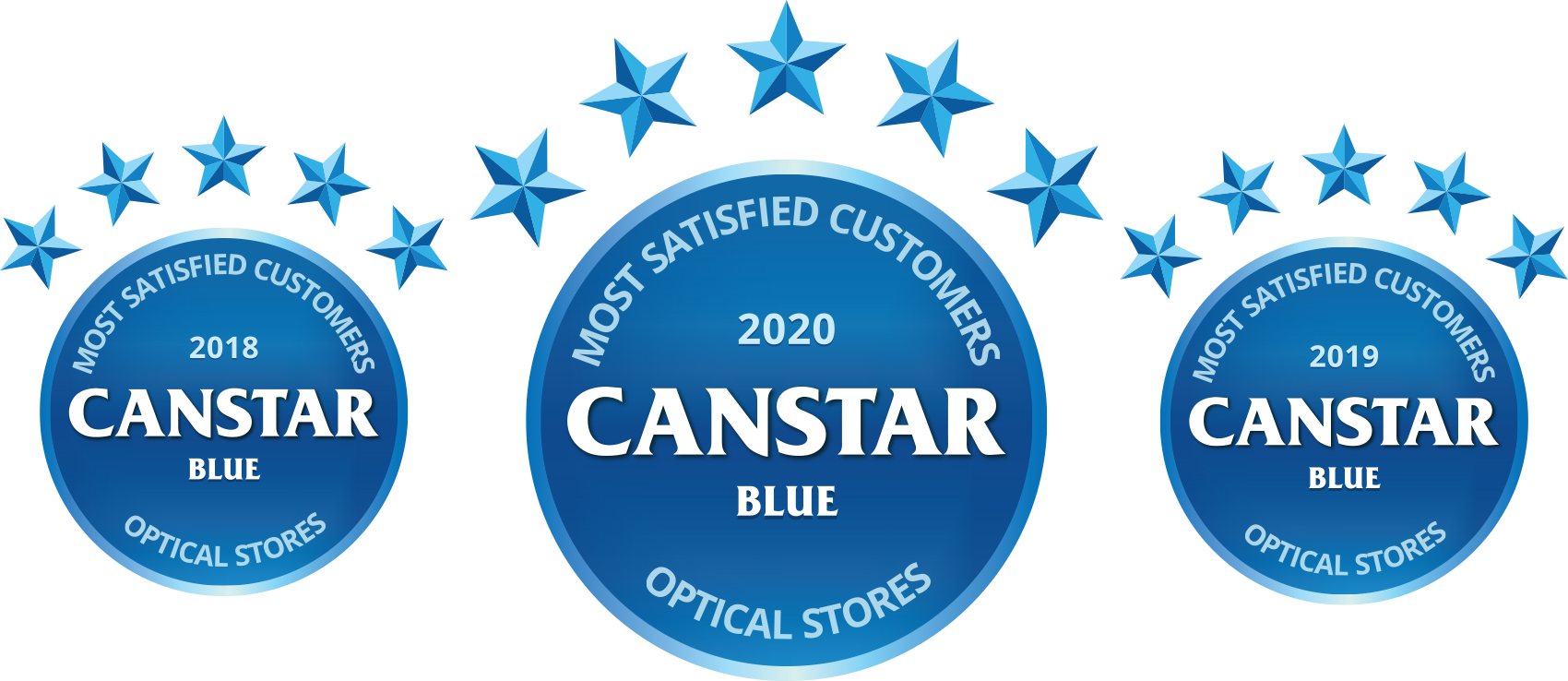Tips for buying kids eyewear
How thick will the lenses be?
The lens prescription is always the primary consideration in choosing glasses. Before you start looking for the frames, consult with the optometrist and optical staff about lens considerations.
If the prescription calls for strong lenses that are likely to be thick, it is important to keep the frames as small as possible to reduce the final lens thickness. Also, smaller lenses tend to have fewer aberrations near the edge of the lens than large lenses of the same material and prescription, so there is less risk of blurred or distorted peripheral vision.
Fashion Forward
Whether they are full- or part-time glass wearers, most kids get at least a little teasing about their specs, especially the first time they wear them. So it’s very important that they avoid frames that make them look “uncool.” You also should steer your child away from frames that clearly are objectionable, too expensive or inappropriate.
Just keep in mind that the real object is to get your child to wear the glasses. Extra enticement may be found in ultra cool features like photochromic lenses with tints that darken outdoors, which may help inspire any child to want to wear glasses.

Plastic or Metal?
Children’s frames are made of either plastic or metal. Many manufacturers copy adult styles for children’s frames. Kids may be attracted to these styles because they look more grown-up. It’s not unusual for kids to ask for glasses that look just like Mum’s or Dad’s.
In the past, plastic frames were a better choice for children because they were considered more durable, less likely to be bent or broken, lighter in weight and less expensive. But now manufacturers are making metal frames that incorporate these features as well.
Fun colors and patterns make these new frames particularly appealing.
Proper Bridge Fit
One of the toughest parts about choosing suitable frames for young children is that their noses are not fully developed, so they don’t have a bridge to prevent plastic frames from sliding down. Metal frames, however, usually are made with adjustable nose pads, so they fit everyone’s bridge.
Most manufacturers recognize this difficulty with plastic frames and make their bridges to fit small noses.
Each frame must be evaluated individually to make sure it fits the bridge. If any gaps exist between the bridge of the frame and the bridge of the nose, the weight of the lenses will cause the glasses to slide, no matter how well the frame seems to fit before the lenses are made.
It is important that the glasses stay in place, because kids tend to look right over the tops of the lenses instead of pushing slipping glasses back up where they belong. Our optical staff will judge whether a frame fits properly.
The Right Temple Style
Temples that wrap all the way around the back of the ear help keep glasses from sliding down or dropping off a child’s face completely.
For babies and toddlers, nose pads and cable temples that wrap snugly around ears are important to hold glasses in place. Another option is a strap that goes around the head.
For glasses that go on and off frequently, it is better to have regular, or “skull,” temples that go straight back and then curve gently around the back of the ear.
Spring Hinges
A nice feature to look for is temples with spring hinges. These special hinges allow the temples to flex outward, away from the frames, without causing any damage. Although they sometimes cost a bit more, spring hinges can be a worthwhile investment for children’s eyewear.
Kids are not always careful when they put on and take off glasses, and spring hinges can help prevent the need for frequent adjustments and costly repairs. They also come in handy if the child falls asleep with the glasses on or just has a rough day at play. Spring hinges are strongly recommended for toddlers, who sometimes get carried away playing with their new glasses.
Lens Material
Once you and your child agree on frames that you both like, the next consideration is the lenses.
Children’s lenses come in a variety of materials that vary in quality. As the lens material increases in quality, it becomes thinner, lighter and has stronger coatings to prevent damage and scratching. A good example of higher quality materials are polycarbonate or a material called Trivex, because these lightweight materials are significantly more impact-resistant than other lens materials.
In addition to being the safest materials, they also are lighter in weight than regular plastic lenses, a nice advantage for strong prescriptions.
The least desirable material for your child’s lenses is glass. Although it must be treated for impact resistance, glass still shatters when it breaks, and broken glass — even safety glass — is a hazard to the eye. Glass lenses also are significantly heavier, which makes them less comfortable to wear.
Sports Eyewear
Polycarbonate is such a safe lens material that you may be tempted to let your child play sports in his regular glasses.
If your kid is involved in sports, a proper sports goggle with polycarbonate lenses will often provide the best protection against eye injury.
Although it sounds counter-intuitive, a sports goggle should have a larger vertical eye opening, rather than a smaller one. If an impact should occur and the goggles are pushed toward the face, a large eye opening keeps the impact points far above and below the eyes. With a small opening, however, the goggle hits right at the edge of the eye socket, which can damage the globe of the eye.
Warranties
Purchasing glasses for very active or rough chidren, toddlers, or even just first time wearers can strike fear into the hearts of parents when considering the treatment the glasses may go through. So, warranties, in addition to the quality of the glasses, can give great peace of mind to parents when purchasing glasses for children.
The warranties to look for are
- Length of the frame manufacturing warranty: 1 year or 2 years?
- Replacement cost if glasses are lost or damaged beyond repair?
- Purchasing cost of second pairs as backup or use for school and home?
- Replacement of screws and nosepads for glasses?
- Adjustments and maintenance of glasses and
- Warranties on lens prescriptions?
Backup Pair
Because children can be tough on their eyewear, it’s always a good idea to purchase a second, or backup, pair of glasses for them. This especially is true if your child has a strong prescription and cannot function without his or her glasses.
Special discounts often apply if the backup pair is purchased at the same time as the primary pair. In some cases, sports goggles can be used as a spare pair of glasses. Or, if your child’s prescription has not changed significantly, keep his or her previous glasses in a safe place for use as a spare.
If your child wears glasses full time (including outdoors), photochromic lenses or prescription sunglasses also should be considered to decrease glare, increase visual comfort and provide 100 percent protection from the sun’s harmful UV rays.




